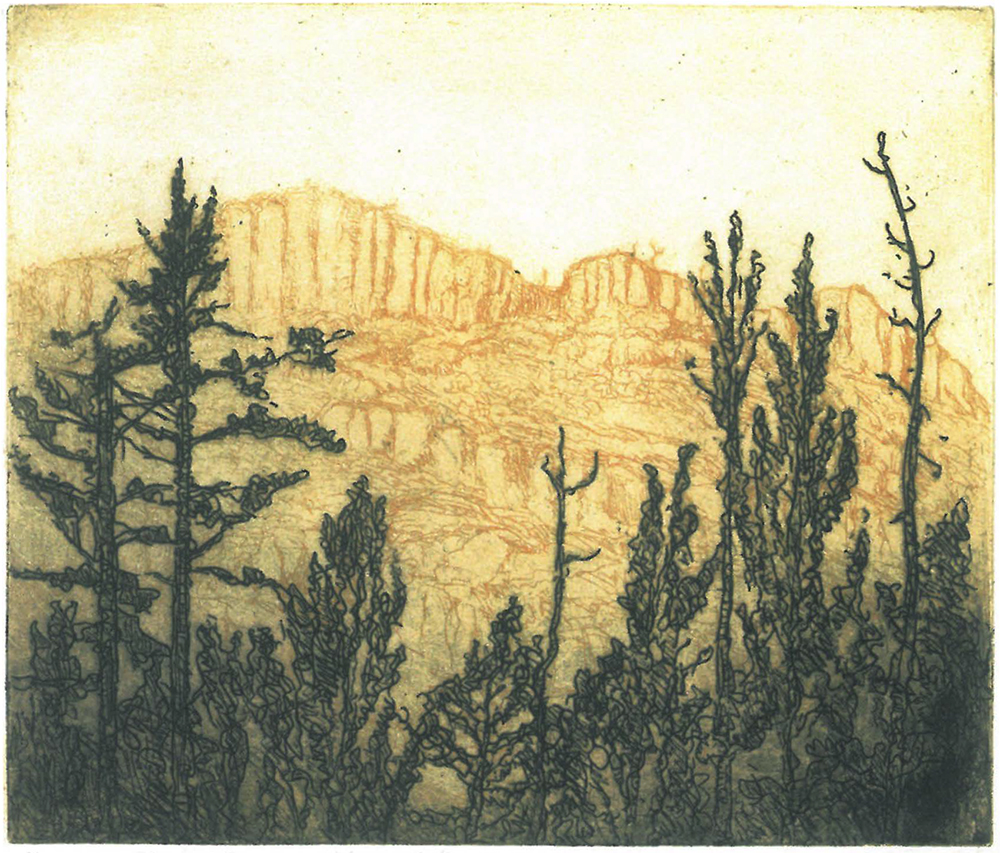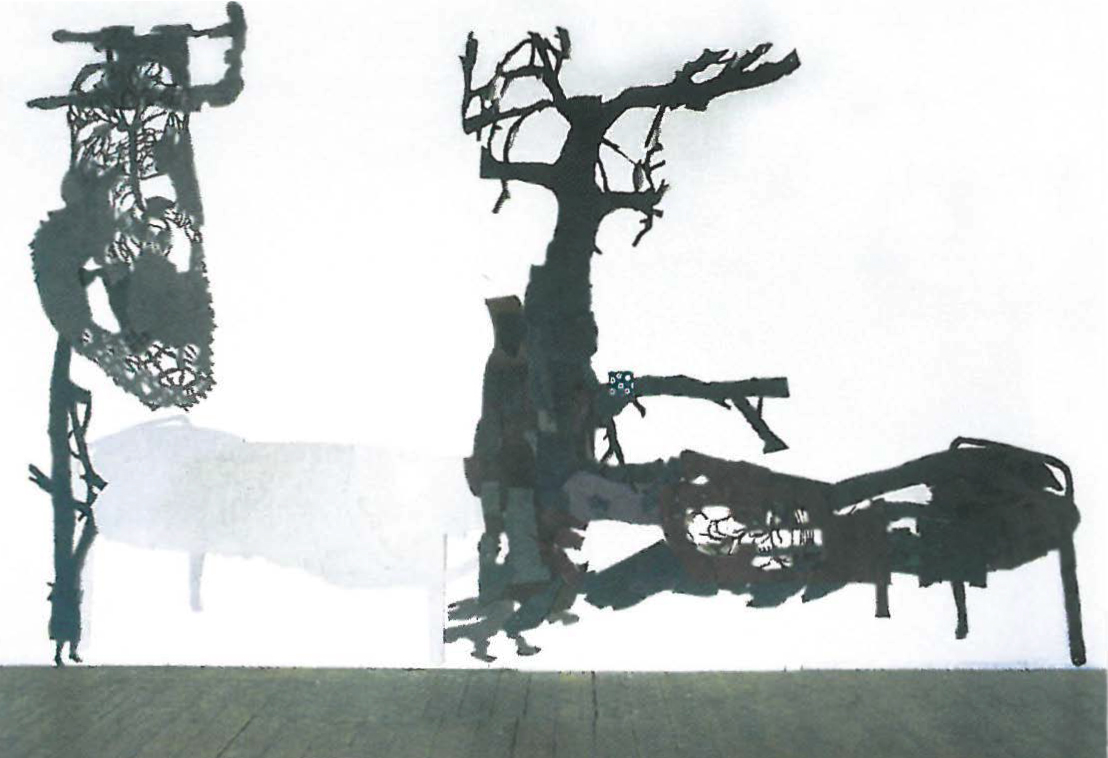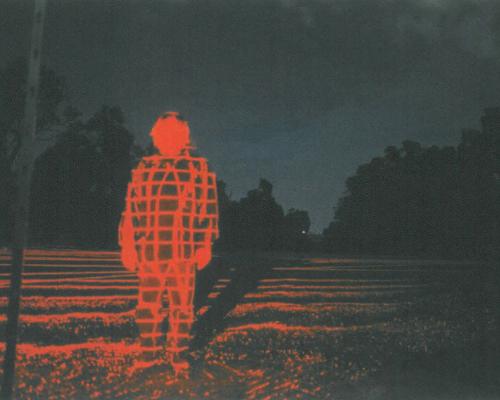
This exhibition is the Art Gallery of South Australia's offering for the Year of the Outback. Arid Arcadia is a title that reminds viewers that while we often think of Arcadia as meaning a kind of Paradise, a place of flowing rivers and green valleys, it is in fact a stony region in the Peloponnesus though nevertheless the place where a god such as Zeus was born. Of course a stony place can be paradise.
The complex ambivalence of Arcadia, arid or paradisiacal, is an undercurrent to this exhibition. In part a vaguely heroic story is being told, a twice-told tale that revolves around Hans Heysen's 'discovery' of the Flinders Ranges. Another story is that of Jessie Traill who went there before Heysen but none of whose paintings of the Flinders have yet been located. There are two etchings on show by Traill, who is generally known as a printmaker rather than a painter, one of which shows the Organ Pipes of Wilpena Pound and another which shows a mirage. This last work brilliantly captures the elusive but particular nature of a phenomenon of dry places, the trees and water which appear in the distance but which recede and shift and can never be reached.
The exhibition begins with a very contemporary artwork, Nicholas Folland's hot rocks, Mount Hopeless (2001) actual granite boulders that are heated by hot rod heaters inserted into them. Sparkling with the hard beauty of granite they can be touched by viewers and will eventually be worn away by sweat and grease though it will take a damn long time. These works respond to stories of the explorer Eyre reaching Mount Hopeless and also to the work of Antony Hamilton whose installations of historical outbackism have a resonant place in South Australian art. Hamilton's new work in this exhibition is a double-crease Akubra hat, an outback emblem of masculinity that was a trademark of Hollywood cowboy Roy Rogers. This drawing together of America and Australia, something also often played on by writer Gerald Murnane and photographer Tracey Moffatt, is a field of artistic and literary inquiry with a lot of mileage still to be explored.
Photographs of rock paintings and engravings by Aboriginal people are the chronological beginning of the exhibition and their simplicity provides great freshness and immediacy. Rather than looking like the product of ancient and inscrutable minds they look as if they are telephone table doodles that were made yesterday. Curiously a simple image of a skeleton tree in one of these paintings recurs in other artworks on show, thus a bare tree, dead but still standing, is the sort of ordinary object which can be emblematic of a region. British artist Andy Goldsworthy memorably covered a large bare tree with red earth on a station somewhere out that way.
A few drawings by William Westall aside, watercolour paintings by E.C. Frome, government surveyor, show the first 'white' images of the Flinders. Most interesting is the work of three separate Hills in which Frome has been taken over by some kind of fata morgana and painted exaggerated versions of certain peaks in the Flinders Ranges. A little like illustrations for a child's fairy story, these peaks billow and flow and suggest the potential effect of the Flinders Ranges on the imagination. Also present in the exhibition is Frome's iconic 1843 image First view of the salt desert – called Lake Torrens in which a man on horseback looks out to the horizon with a telescope. It is possible to see that the telescope is aligned with his mouth and that he has just taken it away from his eye and is about to shake his head in disbelief.
The continuing Aboriginal presence in the Flinders Ranges is seen in fires in early watercolours in Frome's paintings of Black Rock Hills Depot, as well as in contemporary artworks by Regina McKenzie and Sam Lester but most engagingly in the carved works by Ted Coulthard, Davey Ryan, Ted Wilton, Henry Wilton, Rufus Wilton and other unknown artists that were borrowed from the collection of the South Australian Museum.
The most contemporary work in the exhibition is by Sally Smart. Called Tree House (The Unhomely Body) In memory of Ken Voight (1974-2002) it uses Smart's trademark felt cut-outs to show a bare tree as well as the steel beds of a sleep-out, the lace of a bedspread and a sense of the rolling purple shadows and hills of the Flinders thus combining the layered activities of people and their sometimes uneasy occupation with the great quiet mystery of this place.













